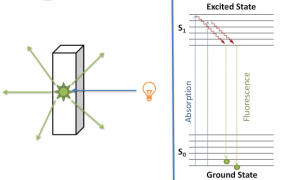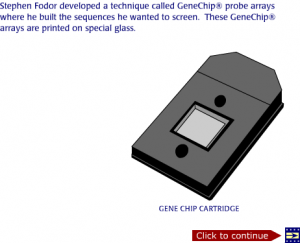Liposomes are a novel drug delivery system which allow the encapsulation or incorporation of drugs into nanoparticle size vesicles for their delivery. This animation on liposomes covers the basic concepts of how liposomes can be prepared, the sizing of liposomes and the advantages and disadvantages of using each technique.
Liposomes can be made by hydrating dry lipids, freeze thawed multilamellar vesicles (MLVs), multilamellar vesicles by reversed-phase evaporation. Liposomes may be sized using extrusion techniques, high sheer methods such as sonication, homogenization and microfluidization. Liposomes may also be remotely loaded with drugs using ammonium ion gradient, pH gradient. Liposomes may also be prepared by lyophilization. Detergent dialysis of liposomes may be used to study membrane proteins incorporated into the bilayer.
We also recommend watching the Animation of Liposome Basics – Part 1 which covers the structure and uses of liposomes.
This animation is provided by Encapsula Nanosciences and has been posted on YouTube by nanoliposomes.
Find Books on Liposomes
Check out some really useful books on liposomes
Transcript:
” Here we describe the basic method for preparing and sizing of liposomes .
The simplest method for preparing liposomes is hydration of dry lipid. The lipid is dissolved in organic solvent along with any lipid soluble compounds to be incorporated into the liposomes. The solvent is commonly removed by rotary evaporation resulting in a thin film of dry lipid. Some solvents can be removed by lyophilisation resulting in a dried lipid cake. An aqueous solution containing water soluble compound to be encapsulated is then added to the lipid film or cake to hydrate the lipid and form the liposomes. The aqueous suspension must be heated above the phase transition of the lipids in order for the liposomes to form. The resulting multilamellar liposomes consists of many concentric lipid bilayers.
While all or most of the lipid soluble compounds will be incorporated into the bilayers of these lipsomes, the amount of water soluble compound entrapped is usually very low because these MLV’s (multilamellar vesicles) have a small captured volume. Very little aqueous solute penetrates the onion like layers of hydrated bilayer lipids.
The captured volume of these MLV’s (multilamellar vesicles) can be increased by freezing and thawing the liposomes several times. Repeated freezing and thawing ruptures and reforms the MLV’s resulting in an increased number of liposomes with fewer layers of lipids and more aqueous space inside each liposome. Thus the freeze-thawed liposomes encapsulate more aqueous solute and often have a multi-vesicular morphology. The aqueous solute is now uniformly distributed inside each liposome.
The thin film method is limited to laboratory scale while the reverse phase evaporation method can be used to produce millilitres upto 1000 litres of liposomes. The lipid is dissolved in organic solvent along with any lipid soluble component, the aqueous compound is added to the lipid solution . This biphasic mixture is then emulsified by some form of high shear mixing. The organic solvent is evaporated from the this emulsion forcing the lipid into the aqueous phase where it organizes into bilayers and forms liposomes. Additional aqueous phase is added in order to complete the liposome preparation. Again the temperature of the aqueous phase must be above the phase transition temperature of the lipids in order for liposomes to form.
Unlike mlv’s produced from thin film, liposomes produced by reversed phase evaporation usually have one upto a few bilayers per liposome. Like freeze-thawed liposomes these liposomes can be multi-vesicular and have uniform aqueous solute distribution.
Liposome characteristics can be optimised for a particular formulation by systematically varying the process parameters. Many variations of these methods are described in the scientific literatures.
Liposomes produced by these method have a broad size distribution. The only method which can produce a definable, unimodal distribution of liposomes in a 100nm range is high pressure extrusion through membrane tight filters of a fixed pore size. The stainless steel device which supports the filters used for extrusion withstands internal pressures in excess of 1000 psi. Extrusion cannot be accomplished with standard liquid filtration devices. Larger extruders are pressurized by nitrogen while extruders handling volumes less than 1 ml uses gas tight syringes to generate pressure manually.
Extrusion must be carried out above the phase transition of the lipids in the liposomes. In order to achieve a narrow size distribution the liposomes must be passed through the filters 10 times or more .The liposomes suspension becomes more translucent during extrusion indicating that the liposomes are becoming smaller. The lower size limit of a liposomes is 30-60 nm depending on the type of lipid used.
High shear methods (such as sonication, homogenization and microfluidization) are used to reduce multilamellar liposomes to unilamellar liposomes at a lowest size limit.
Most water soluble compounds must be present at the time the liposomes formed to be encapsulated. Some ionizable compounds can cross the membrane in their neutral form and be converted into insoluble salt form inside the liposome. This remote loading technique allows drugs to be loaded into the lipsomes after the liposomes are formed but is not widely applicable.
Some ionizable compounds can also be loaded into premade liposomes with a ph gradient. In this example the neutral form but not the charged form of the compound can cross the membrane into the liposome but cant escape due to high concentration of protons inside the liposome.
Lipids orgnise into bilayers due to the presence of water, when the water is removed by lyophilisation the bilayer loses its structural integrity. After rehydration the liposomes have a different size distribution and have leaked their entrapped contents.
Some aqueous solutes such as sucrose can replace water with the lipid head group thus maintaining the bilayer structure when water is removed. In this case the liposome can be lyophilised then rehydrated while retaining its original size and the entrapped contents. The membrane proteins can be studied in thier native state by incorporating them into liposomes. The protein and the lipid are co-dissolved in the detergent solution. When the detergent is slowly removed by dialysis, the protein incorporates into the newly formed lipid bilayer. “



Is this procedure correct to incorporate hydrophobic compounds;
1- dissolving Hydrophobic compound in a solvent,i.e.Ethanol
2-adding buffer/phospholipid dispersion ( premade liposome) and mixing
3-evaporating Ethanol
4- homogenization 10 times
is this method right? can hydrophobic compound get into the liposome in this way ?
or is it completely wrong ?
Thanks
For most compounds I do not think this method would work as once the liposomes are made, it is very difficult for the drug to enter in. However, it would depend on the log p of the molecule, as if it is capable of penetrating the liposome barrier it might just be able to get inside as well. In such a case it would be an equilibrium and would be dependent on the pH and concentration of the drug outside the liposome vs inside.